Monitoring Impact:
Insights from Spain’s National Open Science Strategy
Insights from Spain’s National Open Science Strategy
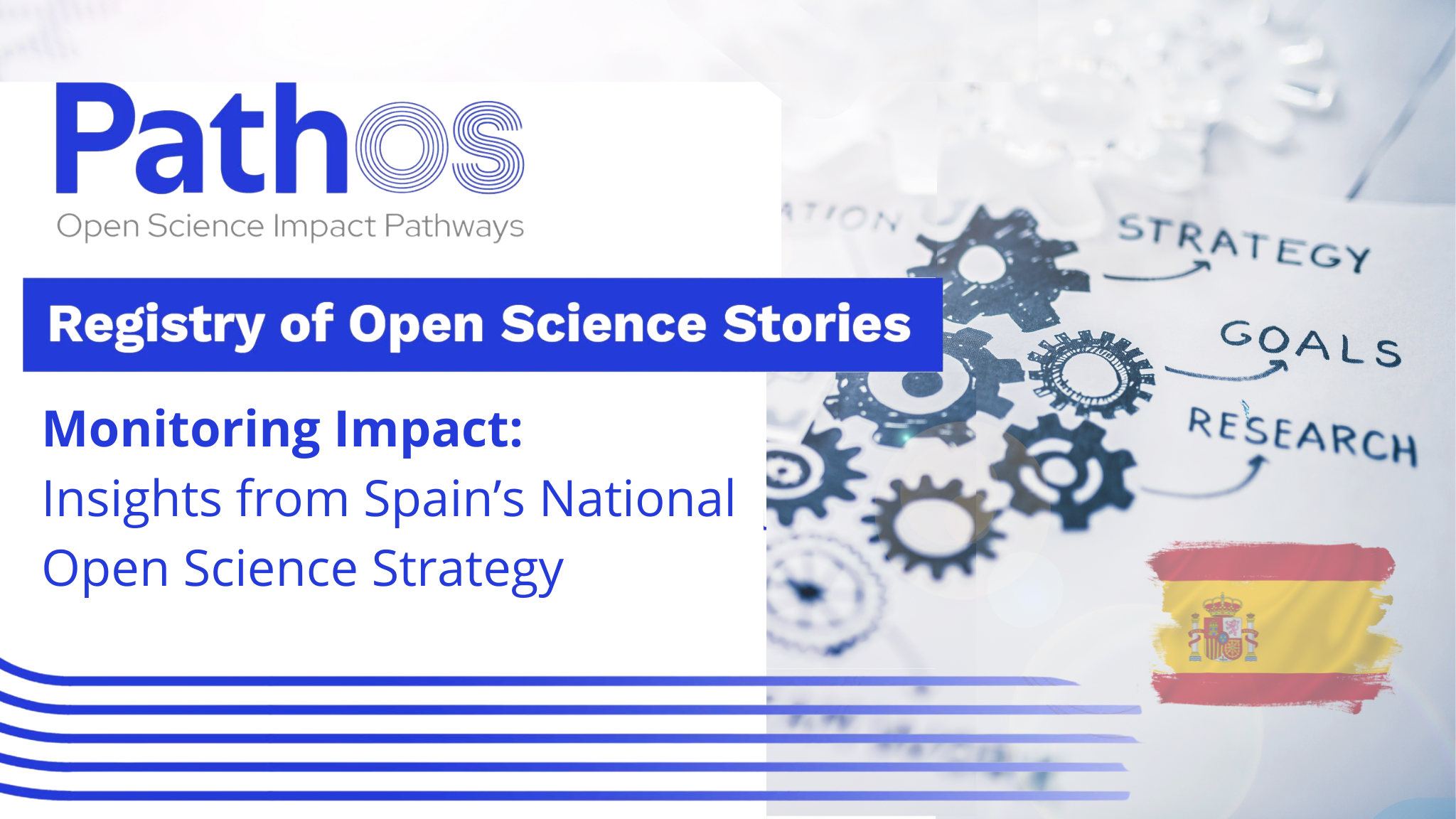
Within PathOS we are collecting stories on how Open Science (Open Access to publications, Open/FAIR data and software, collaborations with citizens) has made a positive or negative impact. Our ultimate aim is to highlight stories of Open Science practices and how these are linked to impactful outcomes. In this way, we hope to foster a learning experience and to inspire others to follow. Join us and read the first Open Science stories!
Could you briefly introduce yourself and what your Open Science story is about, including its time (e.g. year range) and location?
Pilar and Laura are the Spanish National Open Access Desks (NOADs).

Pilar Rico-Castro holds a PhD in Science and Technology Public Policies and a master's degree in Political Science. She has extensive expertise in science and technology policy, including policy design, evaluation, and foresight. Pilar has worked at the Spanish Foundation for Science and Technology (FECYT) since 2006, where she became Head of Unit in 2008. She is currently the Head of the Open Science Unit at FECYT.
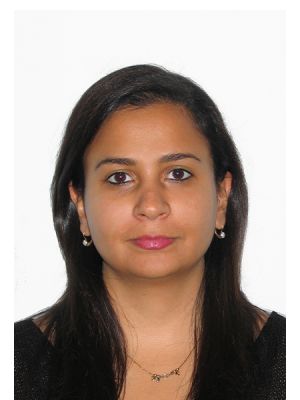
Laura Valeria Bonora holds a master's degree in Applied Statistics and serves as a Technical Analyst in the Open Science Unit at FECYT. For the past seven years, she has worked on promoting Open Science as the technical lead for RECOLECTA, the national aggregator of scientific repositories in Spain.
"This practice has significantly contributed to embedding Open Science principles in Spain’s research system, influencing both policy and infrastructure. It promotes transparency, reproducibility, and accessibility of research outputs. Personally, it has reinforced our belief in the need for public institutions to act as enablers, not only in setting policy but also in providing the tools and support needed for researchers and institutions to implement it effectively."
What was the context or background in which this Open Science practice was used? What were the goals or expected outcomes?
The National Strategy for Open Science (ENCA) 2023-2027 was developed in response to national and European commitments to Open Science, especially following the reform of the Spanish Science Act (Act 17/2022). The goal was to establish a robust, coordinated national policy aligned with EOSC and global Open Science standards. A key expected outcome is:
- Ensure the existence of sufficiently robust and well-articulated interoperable digital infrastructures to absorb the impact of the implementation of a national Open Science policy and facilitate its integration into the international ecosystem, as well as its integration, where appropriate, into the European Open Science Cloud (EOSC).
- Promote the proper management of research data generated by the national R&D&I system through FAIR principles (Findable, Accessible, Interoperable, Reusable) to increase its localization, accessibility, interoperability and reusability.
- Implement open and free access by default to scientific publications and results funded directly or indirectly with public funds for the entire population.
- Establish new research evaluation mechanisms and an incentives and recognition system aimed at promoting Open Science practices, as well as training all personnel (researchers, managers, funders, evaluators) to align their professional performance with the principles of Open Science.
What was your role or relationship to this Open Science practice? Were you a direct participant, an observer, or something else?
The Spanish Foundation for Science and Technology (FECYT) is a public institution that depends on the Ministry for Science and Innovation and Universities. We contribute to design and implement the National and the European Open Access and Open Science policies for them.
We contribute as in-house Open Science experts in the writing process of legal, strategic and planification official documents such as (1) the reform of the National legal framework affecting Open Access and Open Science; (2) the Spanish Strategy for Science, Technology and Innovation (EECTI); (3) the State Plan for Scientific and Technical Research and Innovation (PEICTI); (4) the National Strategy for Open Science (ENCA).
Also, we provide specific Open Science services to our national research community: First, we manage the national harvester for Open Access repositories RECOLECTA. Second, we manage the Open Science National funding call "María de Guzmán" (3M euro) that offers funding for Open Access repositories, CRIS systems, and Diamond journals' institutional publishing platforms. Third, we provide training services to our national community through regular workshops, seminars, and conferences, both face-to-face and online, for researchers, support staff, librarians, repository managers, and public decision-makers.
How was this Open Science practice implemented, to your knowledge? Who were the key actors involved?
The practice was implemented through close collaboration between FECYT, the Ministry of Science, Innovation and Universities, the national funding agencies, the national research assessment agency and other public research stakeholders. It involved designing policy frameworks, launching national funding instruments, and developing interoperable digital infrastructures aligned with EOSC and OpenAIRE standards. Key actors included repository managers, IT experts, librarians, policy makers, and researchers, supported by FECYT’s technical and strategic guidance.
Were there any quantifiable outcomes or measurable successes linked to this practice? What metrics or indicators were used to evaluate these outcomes, if any?
The National Open Science Strategy (ENCA) for 2023-2027 includes all the commitments relating to Open Science adopted by different public agents in the system, included in the reform of the Science, Technology and Innovation Act, approved in September 2022, Act 17/2022; the Spanish Science, Technology and Innovation Strategy 2021-2023: and the State Plan for Scientific and Technical Research and Innovation 2021-2022; in addition to reviewing the international and national context in terms of Open Science.
One of the specific objectives of the ENCA is: Ensure the existence of sufficiently robust and well-articulated interoperable digital infrastructures to absorb the impact of the implementation of a national Open Science policy and facilitate its integration into the international ecosystem, as well as its integration, where appropriate, into the European Open Science Cloud (EOSC).
The strategic axes on which the ENCA is structured are as follows:
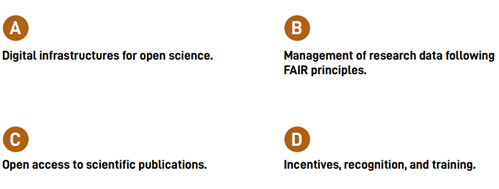
In AXIS A (Digital infrastructures for Open Science) we address specific aspects related to EOSC:
Digital infrastructures for Open Science are the platforms and services for generating, depositing, storing, and long-term preservation of research outputs (scientific articles, research data, methodologies, code, protocols, software, etc.). Some of these infrastructures include data spaces defined in the European Data Strategy, institutional, regional, and thematic repositories for open access to scientific publications and research data, institutional research management systems, and publishing platforms provided by public institutions responsible for editing, reproducing, and disseminating scientific journals, books, and other publications. All initiatives proposed in this Strategy will be supported by platforms and technological resources developed with open-source software, enabling the achievement of European digital sovereignty, and facilitating the use of specific licenses for content distribution and reuse. Expected outcome: Availability of interoperable and fully operational digital infrastructures with sufficient capacity to implement national, European, and international policies on Open Science, including integration into the international ecosystem and, where appropriate, the European Open Science Cloud (EOSC).
Each of the action axes defined in the ENCA 2023-2027 will be translated into specific action measures, establishing how they will be carried out and the expected timeframe for their implementation (short, medium, or long term).
Most specific: in AXIS A (Digital infrastructures for Open Science), action 4:
A4. Interoperability of all Open Science digital infrastructures to guarantee their sustainability and facilitate the integration of data and services into the European Open Science Cloud (EOSC).
HOW: An Interoperability Plan for Open Science digital infrastructures will be developed in coordination with the guidelines of EOSC and OpenAIRE, the repository certification services of RECOLECTA, the Normalised Curriculum Vitae (CVN), and the journal evaluation services of FECYT.
TIMEFRAME: Medium-term
INDICATORS:
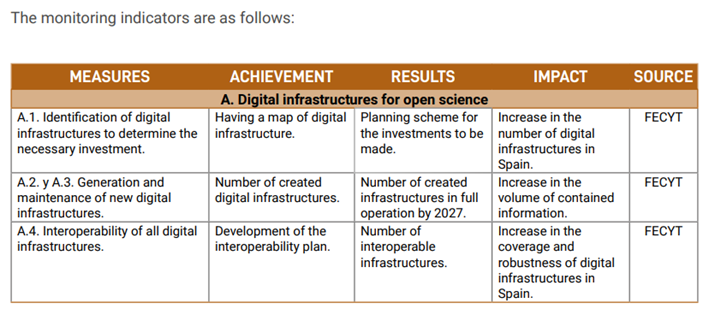
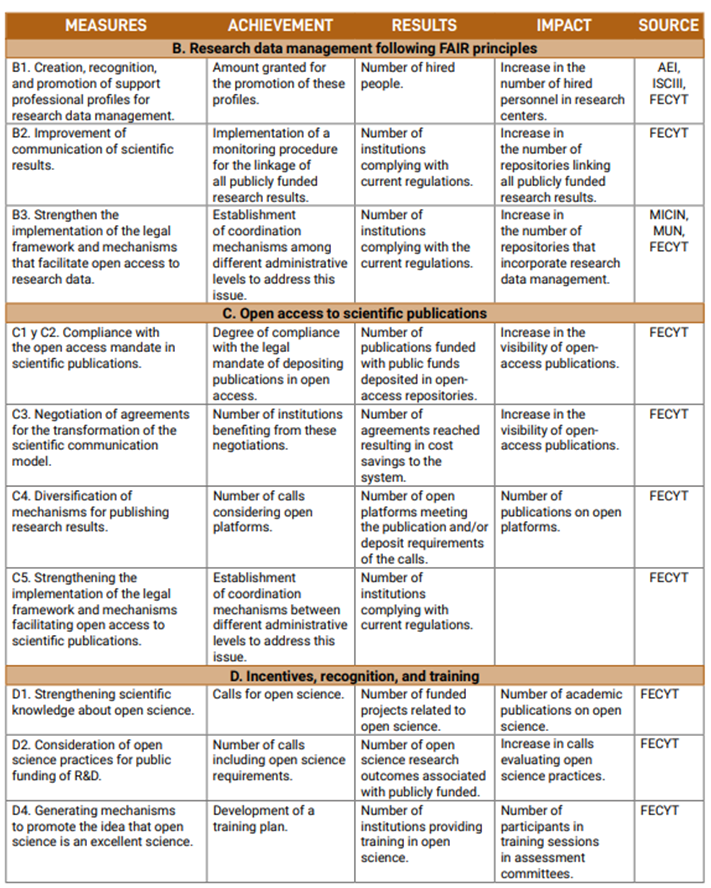
To measure the impact of A4 interoperability, it is important to combine technical indicators, such as system integration, standards adoption, and metadata harmonisation, economic support to the repositories community, stakeholder engagement, and repository connectivity.
Example:
Analyse the compliance of repositories with EOSC and OpenAIRE requirements, measured by the percentage of certified repositories through RECOLECTA. RECOLECTA has a metadata validation system and a NEW repository evaluation module. This new initiative allows repositories to assess their policies, metadata quality, interoperability, logs/statistics, and visibility through an evaluation questionnaire and a peer review process. In 2024, we launched the pilot test, and this year, we plan to roll out the first official edition.
What challenges were associated with this practice, from your perspective? What lessons can be drawn from its implementation?
One of the main challenges was establishing methodological consensus around how to measure interoperability and impact. Technical difficulties included harmonising metadata standards, integrating heterogeneous systems, and coordinating multiple institutions with varying levels of readiness. Key lessons include the importance of early stakeholder engagement, clear guidance, and sustained funding mechanisms to ensure long-term infrastructure viability.
How do you perceive this practice's influence on the broader scientific community or society? Has it affected your own views or approaches to research?
This practice has significantly contributed to embedding Open Science principles in Spain’s research system, influencing both policy and infrastructure. It promotes transparency, reproducibility, and accessibility of research outputs. Personally, it has reinforced our belief in the need for public institutions to act as enablers, not only in setting policy but also in providing the tools and support needed for researchers and institutions to implement it effectively.
Based on your experience or observation, would you recommend this Open Science practice to others? Why or why not?
Yes, absolutely. Coordinating a national Open Science strategy backed by interoperable infrastructures and supported by technical services (such as RECOLECTA and targeted funding) creates a strong foundation for sustainable Open Science implementation. It also fosters alignment with international frameworks like EOSC.
More specifically, we provide specific Open Science services to our national research community: First, we manage the national harvester for Open Access repositories RECOLECTA. Second, we manage the Open Science National funding call "María de Guzmán" (3M euro) that offers funding for Open Access repositories, CRIS systems, and Diamond journals' institutional publishing platforms. Third, we provide training services to our national community through regular workshops, seminars, and conferences, both face-to-face and online, for researchers, support staff, librarians, repository managers, and public decision-makers.
The Spanish experience demonstrates that a public, collaborative, and service-oriented approach can drive meaningful change in how research is conducted and shared.